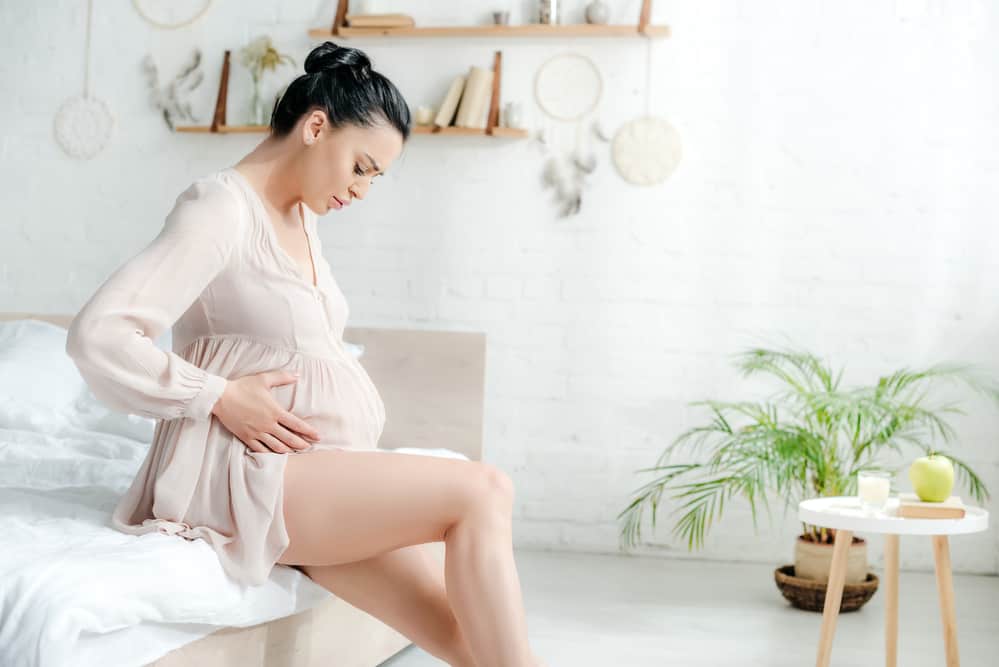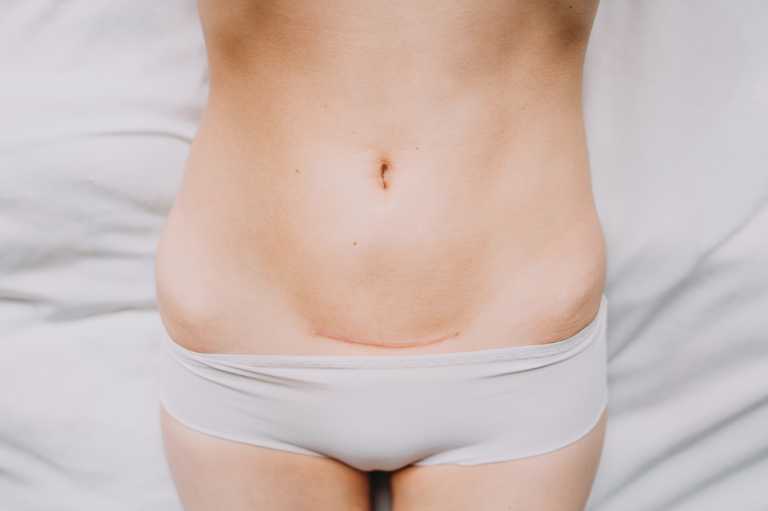Getting your baby in the best position for birth will:
- Speed up your delivery.
- Reduce the need for pain relief.
- Lower your risk of an instrumental or cesarean birth.
So it’s important to know how your little one is lying as you approach your due date. Your midwife or doctor can help you with this and perform an ultrasound if there’s any doubt. But it’s also possible to tell your baby’s position from their kicks!
Here’s where you might feel these little jabs and what they mean:
Feeling Kicks Under Your Ribs: Occiput Anterior Position
If you’re getting kicked in the ribs, congratulations! Your little one is likely in the occiput anterior position, which means they are head down and facing your back.
This position is ideal for birth, as the narrowest part of their skull will press on your cervix. So they’ll find it easiest to move through your birth canal.
Clear signs that they’re in the occiput anterior position include:
- Feeling kicks under your ribs.
- Your bump sticks out and feels hard—this is your baby’s back.
- Your belly button feels stretched or pops out.
Your child may move into this pose as early as week 18. But don’t panic if they’re not there yet. They could still turn all the way up to and including labor.
Feeling Kicks at the Front of Your Bump: Occiput Posterior Position
If you’re feeling most of the kicks in the front of your belly, your baby is likely in the occiput posterior, or “back to back” position. This means they are head down but facing your belly rather than your back.
The trouble with this is that during labor, you’ll experience intense, painful contractions in your lower back. It also makes it trickier for your baby to travel through the birth canal as they can’t tuck their chin. This can slow progress and increase your chances of needing an assisted (instrumental) birth or c-section.
Clues that your little one is back-to-back include:
- A flatter bump.
- Your bump dips in near your belly button.
- A soft spot in the middle of your bump, where your baby’s back should be.
- Feeling kicks in the front of your belly.
- Lower back pain.
The good news is that your little one can turn at any point, even during labor. In fact, between 15 and 32% of babies begin labor back-to-back, and only 5 to 8% stay that way.
For this reason, most healthcare providers won’t intervene with an occiput posterior baby, and you’ll still be able to attempt a vaginal birth.
However, back-to-back births are extremely uncomfortable, and you may have to labor for hours before they turn. Fortunately, there are things you can do to make things easier:
- Keep Moving in Late Pregnancy
The more time you spend lying down, the less chance your little one has to turn. Aim for 30 minutes a day. Walking is good, and pregnancy yoga is great!
- Labor Upright With Your Hips Above Your Knees
Kneel in a birth pool or bounce on a birthing ball for as long as you can.
- Have a Mobile Epidural
Having an epidural that keeps you lying on your back increases the chance of your baby staying back-to-back from 3.3 to 12.9%. But the dilemma is that without an epidural, your contractions will be extremely intense.
To get around this, discuss the possibility of a mobile, walking, or low-dose epidural with your healthcare provider. It’ll give you the same pain relief, but you’ll still be able to use your legs and get into upright positions.
Kicks Lower in Your Belly: Breech Position
Feeling kicks lower in your belly indicates that your child is in a bottom-down or breech position.
There are three breech positions:
- Frank Breech: Where your baby’s feet are up by their head, and you’ll feel kicks near your ribs.
- Complete Breech: Where they have their legs crossed in front of them, and you’ll feel kicks around your belly button.
- Footling Breech: Where one or both feet are down below their bottom, and you’ll feel kicks below your belly button.
If your baby is born breech, their body will move through your cervix first. This can be a problem because:
- Their body may not stretch your cervix enough for their head to pass through.
- The umbilical cord may get trapped or come out first.
- They may get stuck.
A vaginal birth is still an option if you have a team of professionals experienced in breech deliveries. However, the risks of complications are lower if you opt for a planned cesarean.
The other option is for a healthcare professional to attempt an external cephalic version (ECV). This is a maneuver where they will try to turn your baby by applying firm pressure to your abdomen with their hands. It works around 50% of the time.
Unfortunately, an ECV also comes with risks like:
- Placental abruption.
- Fetal distress.
- Preterm labor.
- Early rupture of membranes.
So, a team will be kept on standby to perform an emergency cesarean if it becomes necessary.
Kicks on One Side of Your Belly: Oblique or Transverse Lie
Feeling kicking on one side could mean your baby is lying flat (transverse) or diagonally (oblique) across your belly. You may also be able to feel their hard, round head on your other side.
It’s very rare for babies to stay in this position until delivery. If they do, your doctor may attempt to turn them manually, or you’ll be advised to have a c-section.
How to Get Your Baby Into the Right Position for Birth
Finding out that your little one is in a tricky position can be worrying. But remember, your little one can turn into the head-down position any time up to and during labor, and 90% of babies are born in the occiput anterior position. So there is usually no need for concern.
However, once you pass 37 weeks, the chances of your baby turning on their own fall. So, it’s a good idea to work on positioning from around 33 weeks.
Methods to help your baby move into a good position include:
- Staying active and exercising for around 30 minutes a day.
- When sitting, make sure your knees are lower than your pelvis. This usually means adding a few extra cushions to your chair.
- When relaxing in the evening, spend some time bouncing on a Swiss ball rather than lying on the couch.
- Sleeping on your side.
- Sitting on a wedge cushion when driving.
- Taking part in a pregnancy yoga class.
- Swimming with your tummy downwards.
You can keep an eye on your baby’s position by tracking their kicks and movements. In some cases, you may even feel a swooping as they turn.
From the end of your second trimester, you can also try belly mapping. This technique helps you visualize your baby’s placement using body paint or a doll.
Here’s how to do it:
- Locate Your Little One’s Head
Place your hands on your bump and feel for a hard, round shape.
- Listen for Your Baby’s Heartbeat
You can use a stethoscope, fetoscope, or Doppler. A partner may also be able to hear it by placing their ear on your bump.
- Find Their Bottom
This will feel round, like their head, but a little softer.
- Locate Their Feet
They will be in the area where you’re feeling the most kicks.
- Visualize Their Position
Once you’ve identified everything, you can paint an outline of your baby on your belly. Or, you can put a doll in the same posture and hold it up against your bump.
- Take a Photo
Many women keep this as a memento or use it as a way to get in tune with their bodies before labor.




